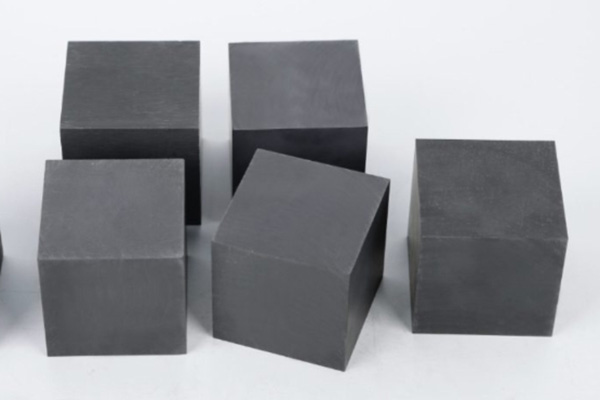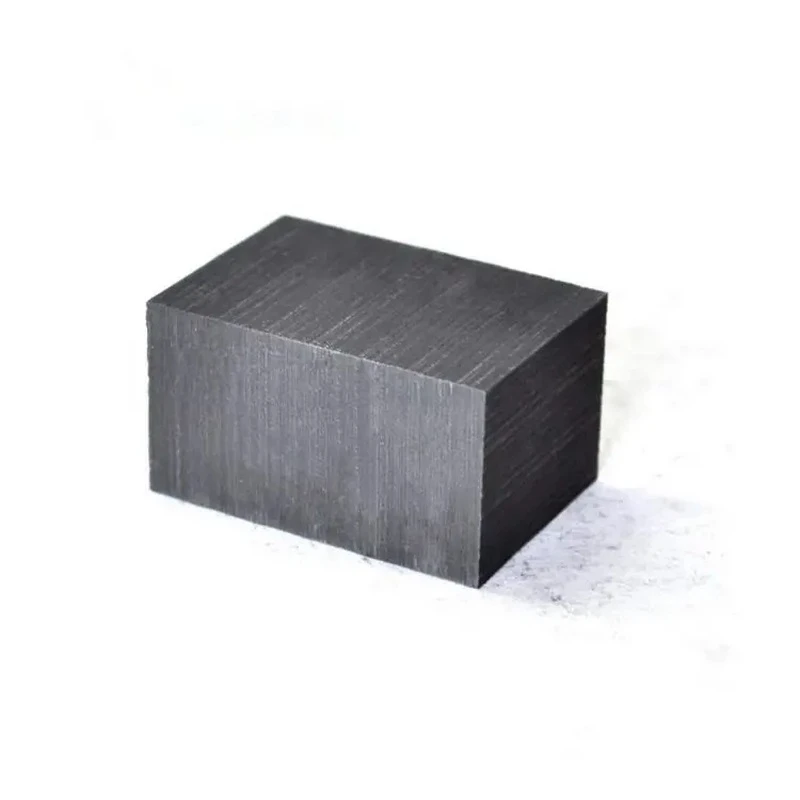This article explores the fascinating world of carbon, specifically focusing on graphite, a versatile and essential material in numerous industries. We’ll delve into its properties, production methods, and diverse applications, providing a comprehensive understanding that makes this a worthwhile read for anyone interested in materials science, manufacturing, or the crucial role of carbon in our modern world. From steel mills to batteries, graphite plays a vital, often unseen, role. This exploration will illuminate that role and explain why carbon in the form of graphite is so important.
What Exactly is Graphite? Unveiling the Structure and Forms of Carbon
Graphite is a naturally occurring, crystalline form of carbon. It’s one of the most stable forms of carbon under standard conditions. Imagine carbon atoms arranged in a hexagonal lattice – that’s the basic building block of graphite. These carbon atoms form strong bonds within flat sheets, known as graphene layers. However, the bonds between these layers are relatively weak (Van der Waals bonds), allowing them to slide past each other easily. This unique structure is what gives graphite its characteristic softness and lubricating properties.
The mineral graphite is known for its exceptional ability to conduct both heat and electricity. It’s also incredibly resistant to high temperatures, making it suitable for a wide range of demanding industrial applications. Think of it as a highly organized stack of carbon sheets, where each sheet is incredibly strong, but the stack itself is soft and slippery. This seemingly contradictory nature is the key to graphite’s versatility.
How is Synthetic Graphite Made? Exploring the Production Process
Synthetic graphite, also known as artificial graphite, is produced through a high-temperature treatment process. The raw materials, typically petroleum coke (a byproduct of oil refining) or coal tar pitch, are rich in carbon. The process involves several key steps:
- Mixing: The carbon-rich raw materials are mixed with a binder, such as coal tar pitch. This creates a homogenous mixture.
- Extrusion or Molding: The mixture is then shaped, either by extruding it through a die or by molding it under pressure. This creates "green" graphite products.
- Baking: The green products are baked in an oxygen-free environment at temperatures around 1000°C. This process removes volatile components and strengthens the material.
- Graphitization: The crucial step! The baked products are then heated to extremely high temperatures in excess of 2700°C, often reaching 3000°C. This intense heat causes the carbon atoms to rearrange themselves into the ordered, crystalline structure of graphite.
- Impregnation (Optional): It is possible to add a resin under pressure to fill in any remaining gaps.
This high-temperature process transforms the amorphous carbon in the raw materials into the highly ordered, crystalline structure of synthetic graphite. The result is a material with superior purity and consistency compared to some forms of natural graphite.
Natural vs. Synthetic Graphite: What’s the Difference?
While both natural graphite and synthetic graphite are fundamentally carbon, they differ significantly in their origin, structure, and properties. Natural graphite occurs naturally in metamorphic rocks. It’s formed over millions of years under intense heat and pressure deep within the Earth’s crust. There are several varieties of natural crystalline graphite, including crystalline flake graphite, amorphous graphite, and vein graphite.
Synthetic graphite, on the other hand, is a manufactured product. It’s created through the high-temperature treatment of carbon-rich precursors, as described above. This controlled process allows for greater control over the final product’s properties, resulting in higher purity and more consistent performance. Here’s a table summarizing the key differences:
| Feature | Natural Graphite | Synthetic Graphite |
|---|---|---|
| Origin | Formed naturally in metamorphic rocks | Manufactured from carbon-rich precursors |
| Structure | Varies depending on type (flake, amorphous, vein); may contain impurities | Highly ordered crystalline structure; higher purity |
| Purity | Generally lower than synthetic graphite; may contain other minerals | Higher purity due to controlled manufacturing process |
| Consistency | Can vary in quality and properties | More consistent properties |
| Cost | Generally less expensive than synthetic graphite | Typically more expensive due to the energy-intensive manufacturing process |
| Applications | Lubricants, pencils, batteries, refractories | Graphite electrodes, nuclear reactors, high-performance applications |
| Carbon Content | Flake size distribution and carbon content determine the quality of graphite ore. | Controlled, normally exceeding 99% |
What are the Key Properties of Graphite? Understanding its Unique Characteristics
Graphite possesses a unique combination of properties that make it invaluable in a variety of applications. These properties stem from its distinctive crystal structure. Here are some of the most important ones:
- High Thermal Conductivity: Graphite is an excellent conductor of heat. This means it can efficiently transfer heat away from a source, making it ideal for applications like heat sinks and crucibles.
- High Electrical Conductivity: Graphite is also a good conductor of electricity. This property is crucial for its use in graphite electrodes for steelmaking and other electrochemical applications.
- Lubricity: The layered structure of graphite allows the layers to slide easily over one another, giving it excellent lubricating properties. This makes it useful in dry lubricants and pencils.
- Chemical Inertness: Graphite is relatively inert to most chemicals, meaning it doesn’t readily react with other substances. This makes it suitable for use in corrosive environments.
- High Temperature Resistance: Graphite can withstand extremely high temperatures without melting or decomposing. It sublimes (transitions directly from solid to gas) at around 3650°C. This makes it a valuable refractory material.
- Mechanical Properties: Graphite is used as the basis for measuring the stiffness of any material.
These properties of graphite combine to create a material that is strong, lightweight, heat-resistant, electrically conductive, and chemically stable. This unique combination is why graphite finds use in so many diverse industries.
How is Graphite Used in the Steel Industry? A Look at Graphite Electrodes
One of the most significant applications of graphite is in the steel industry, specifically in the production of steel using electric arc furnaces (EAFs). In EAFs, graphite electrodes are used to conduct the massive electrical currents needed to melt scrap steel.
These graphite electrodes are typically made from synthetic graphite due to its high purity and consistent properties. The electrodes must be able to withstand extremely high temperatures, intense electrical currents, and the harsh chemical environment within the furnace. The electrical conductivity and thermal properties are critical, and the resistance to oxidation is paramount.
The electrodes are gradually consumed during the steelmaking process, so they need to be regularly replaced. The quality of the graphite electrode directly impacts the efficiency and cost-effectiveness of the steelmaking process. Factors like low electrical resistance, high thermal conductivity, and excellent oxidation resistance are crucial for optimal performance.

Beyond Steel: Exploring Other Diverse Applications of Graphite
While the steel industry is a major consumer of graphite, its applications extend far beyond that. Here are some other key areas where graphite plays a vital role:
- Batteries: Graphite is a crucial component of lithium-ion batteries, which power everything from smartphones to electric vehicles. It forms the anode (the negative electrode) of the battery.
- Lubricants: Graphite’s lubricating properties make it ideal for use in dry lubricants, greases, and oils. It’s particularly useful in high-temperature applications where traditional lubricants would break down.
- Refractories: Graphite’s high-temperature resistance makes it a valuable refractory material, used in linings for furnaces, kilns, and other high-temperature equipment. Used as a refractory mineral.
- Nuclear Reactors: Synthetic graphite is used as a moderator in some types of nuclear reactors. It slows down neutrons, helping to control the nuclear chain reaction.
- Pencils: The "lead" in pencils is actually a mixture of graphite and clay. The softness of graphite allows it to leave a mark on paper.
- Foundries: Graphite is used for molds, providing a smooth surface finish to the castings.
- EDM (Electrical Discharge Machining): Graphite electrodes are employed in EDM to precisely shape hard metals.
This list highlights the incredible versatility of graphite. From the everyday pencil to the cutting-edge technology of electric vehicles, graphite plays an essential, often hidden, role.
Graphite vs. Diamond: Same Element, Different Worlds
Graphite and diamond are both allotropes of carbon, meaning they are different forms of the same element. However, their properties are vastly different. This difference arises from their distinct crystal structures.
- Graphite: As we’ve discussed, graphite has a layered structure with weak bonds between the layers. This makes it soft, slippery, and a good conductor of electricity.
- Diamond: Diamond has a three-dimensional tetrahedral structure, where each carbon atom is strongly bonded to four other carbon atoms. This makes it incredibly hard and a poor conductor of electricity (although it’s an excellent thermal conductor).
The contrast between graphite and diamond is a striking example of how the arrangement of atoms can dramatically alter the properties of a substance. While both are made entirely of carbon, their vastly different structures lead to vastly different applications. The question of graphite and diamond perfectly encapsulates the concept of allotropes. One is a soft, black lubricant, the other a hard, brilliant gemstone.
What is Amorphous Graphite? Understanding the Less Crystalline Form
Amorphous graphite is a type of natural graphite that lacks the long-range crystalline order found in flake or vein graphite. It’s essentially a microcrystalline form of carbon, where the carbon atoms are arranged in small, disordered clusters.
Amorphous graphite is typically the least expensive form of natural graphite. It’s often found in coal seams and is a byproduct of coal mining. It’s generally used in applications where high purity and crystallinity are not critical, such as:
- Foundry Facings: Used to create smooth surfaces on molds for metal castings.
- Lubricants: Used in lower-performance lubricant applications.
- Brake Linings: Used as a friction material in brake linings.
While amorphous graphite doesn’t possess the exceptional properties of crystalline graphite, it’s still a valuable material due to its abundance and low cost.
The Future of Graphite: Innovations and Emerging Applications
The demand for graphite is expected to continue growing in the coming years, driven by several key trends:
- Electric Vehicles: The rapid growth of the electric vehicle market is driving significant demand for lithium-ion batteries, which rely heavily on graphite.
- Energy Storage: Graphite is also used in other energy storage technologies, such as flow batteries and supercapacitors.
- Graphene: Graphene, a single layer of carbon atoms arranged in a hexagonal lattice, is derived from graphite. It has extraordinary properties and is being explored for a wide range of applications, including electronics, composites, and energy storage.
- Carbon Nanotubes: Another exciting area of development.
These emerging applications, coupled with the continued demand from traditional industries, suggest a bright future for graphite.
Choosing a Graphite Supplier: Key Considerations for Procurement
Selecting the right graphite supplier is crucial for ensuring consistent quality, reliable supply, and competitive pricing. Here are some key factors to consider, particularly relevant to someone like Mark Thompson, our typical customer profile:
- Quality Control: Ensure the supplier has rigorous quality control procedures in place. Request certifications (e.g., ISO standards, material specifications) and test reports to verify the quality of the graphite. Thorough quality inspection is paramount. This speaks directly to Mark’s concern about quality.
- Product Range: Choose a supplier that offers a wide range of graphite products to meet your specific needs. This might include different grades of graphite electrodes (UHP, HP), graphite blocks, graphite felt, or other specialized products. A supplier able to offer products like High-power graphite electrode is a good indicator.
- Production Capacity: Assess the supplier’s production capacity to ensure they can meet your volume requirements and delivery timelines. A factory with multiple production lines, like the one I (Allen) manage, is a good sign of reliable capacity.
- Technical Expertise: Look for a supplier with strong technical expertise who can provide support and guidance on selecting the right graphite products for your applications. Mark, lacking technical expertise, would value this greatly.
- Logistics and Shipping: Consider the supplier’s logistics capabilities and shipping options. Ensure they can deliver the products to your location efficiently and cost-effectively. This addresses Mark’s pain point of shipment delays.
- Communication: Choose a supplier with clear and responsive communication channels. Efficient communication is essential for resolving any issues or concerns promptly. This directly counters Mark’s frustration with inefficient communication.
- Pricing: While quality is paramount, pricing is also a significant factor. Compare prices from different suppliers, but be wary of prices that are significantly lower than the market average, as this may indicate lower quality. Mark is quality-sensitive but also seeks competitive pricing.
- Experience: A supplier with substantial exports to your region, like my experience with the USA, North America, Europe, and Australia, demonstrates understanding of international standards and logistics.
- Factory Direct: Dealing directly with a factory, as opposed to a distributor, can often lead to better pricing and more direct communication.
By carefully considering these factors, businesses can select a reliable graphite supplier that meets their specific needs and helps them achieve their business objectives. Consider a supplier with expertise in Ultra-high power graphite electrode production.

Summary: Key Takeaways on Graphite
- Graphite is a versatile form of carbon with a unique layered structure.
- Its properties include high thermal and electrical conductivity, lubricity, chemical inertness, and high-temperature resistance.
- Synthetic graphite is manufactured through a high-temperature process, offering higher purity and consistency than natural graphite.
- Graphite electrodes are essential for steel production in electric arc furnaces.
- Graphite has numerous other applications, including batteries, lubricants, refractories, and nuclear reactors.
- Choosing a reliable graphite supplier requires careful consideration of quality, capacity, technical expertise, logistics, and communication.
- The difference in the carbon atom structure is what gives graphite its unique characteristics.
- Graphite products have a variety of uses, including in high-temperature applications.
- Finding a good supplier from China, as I am, can directly address common purchasing concerns, as highlighted by Mark Thompson’s profile, and help provide Conductive graphite rod for electrodes.
Post time: 03-17-2025



